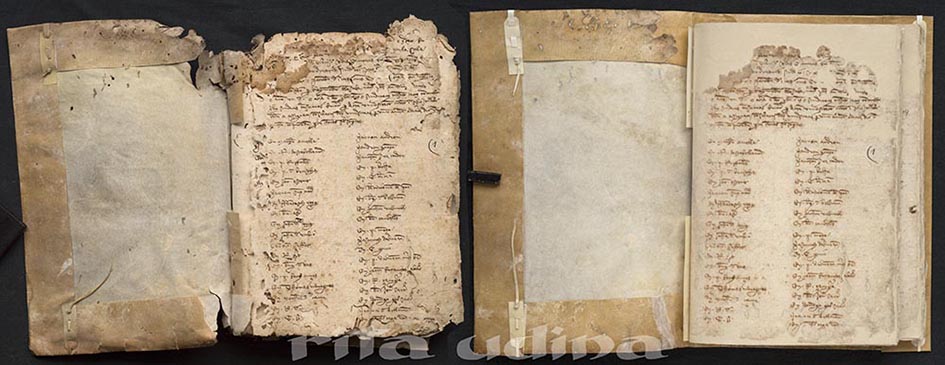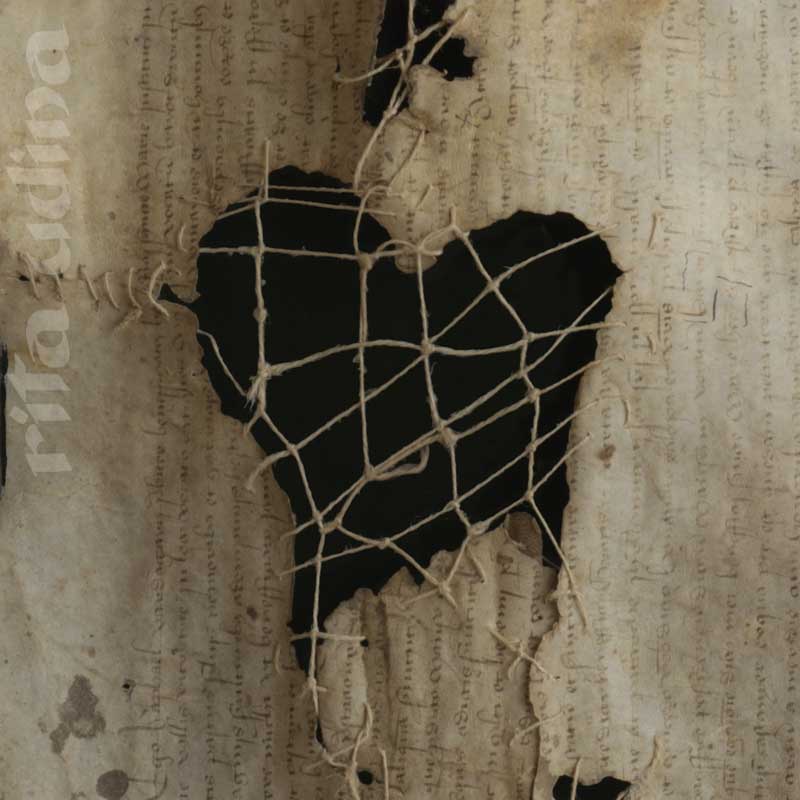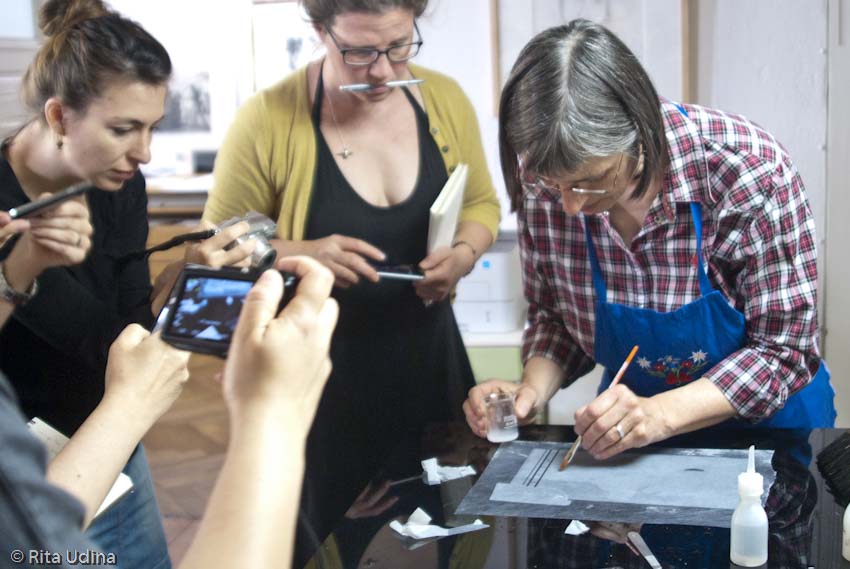courses
These are the posts about courses that I have joined (see the list with all of them here).If you want to know about the conservation courses that take place in this studio, click the Conservation courses link.
Find below the blog posts related to courses:
Christmas angels in serious condition,on their way to full recovery!
Christmas angels currently at ICU in serious condition. Diagnosis: chronical humidity, binding dislocation, a variety of infections and rodent attack. Prognostic is optimistic because a high level team is taking good care of them. Soon they'll be bright and happy as Larry, just like in this year's Christmas greetings. Don't miss the video!
Retouching, a taboo in paper conservation?
Retouching is among the most sensitive within ethics in conservation since it means to establish the aspect a restored object is expected to have. My opinion is that the looks of an historical object is often as important as its physical-chemical condition, and not intervening provides poor results that might mislead its readability more than a proper intervention. The more we intend to make it as neutral as possible, the least arbitrary, we need to admit that retocuhing requires good taste.
Untangling tensions, for an improved 2019
We wish you merry Chrsitmas and a better (and restored) 2019, untangling knots and tensions, at least those from parchment manuscripts.
Gels, microemulsions and nano-systems applied to pressure sensitive tape removal: latest updates
Tape removal, chemical and physical gels, microemulsions and much more. Review and abstract of the conference "Nanosystems. Application to tape removal on cellulosic supports,", which took place in Madrid (Spain), on June 6 to 8th, 2018; within the context of NanoRestArt, the european Research and Developement project.
Course: Inpainting & Loss Compensation on Paper (1rst edition)
Can you match the colour but not the surface texture? [...]
“Customized” conservation with Richard Wolbers
Fellows of joys and sorrows, conservators, here is why I am so excited with the "Cleaning workshop: Paper bathing/stain removal", given by Wolbers: The idea is to make every conservation treatment a kind of custom-made dress for each particular object with a minimal initial investment. He speaks about solvents, gels, surfactants, conductivity and pH. Nor in my wildest dreams had I imagined such a close, easy and useful chemistry. Thanks a lot Richard, we owe it to you.
Chemists and conservators: a love/hate relationship
A cathartic experience: There's nothing more exciting for a conservator such as participating in a chemistry course. We go there with a certain respect (or maybe fear) and the will to be acquainted to a new miraculous reactant that will change our life. The poor conservator will poorly be able to discuss one to one with a chemist, either about the reactions that happen during the restoration treatments or along the inherent ageing of the artefact; and yet we must call the chemist into question and keep this dialogue alive. But thanks to Richard Wolbers I made peace with chemistry and their scientists.
Tracing paper conservation, berliner style
I never enjoy anything as much as visiting other paper restoration studios, especially if they are private. They usually bear the imprint of a personal vocation, a personality which is barely present at institutional studios. I watch the space distribution, the tools, the jars... at Hildegard Homburger's studio. Is there a better way to nose around than becoming a berliner restorer for two days?
“Smart books” and bibliographic terrorism
Terrorists do not always carry explosives or mallets, nor they come from overseas, it may even be people in charge of collections. We ought to deal with them to safeguard "smart books": books intelligently made, such that no material interfere with each other, on the contrary, they create formidable synergies. Each one has its peculiarities, its beauty and its function. They represent a compendium of technology, art, society and culture at the time and place in which they were created.
Course on medieval book structures
At last the course! I think by the moment the [...]
Categories
ARTEFACT
archive or library
book
book structures
bundle
headband
hollow back
limp-vellum binding
locks
sewing
tight back
document
seal
lacquered seal
printed stamp (see TECHNIQUE)
drawing
manuscript
photograph
albumen
daguerreotype
glass plate
silver gelatine
plans, maps, architectural or technical drawings
maps
plans
poster
DAMAGES
acidity / oxidation
bibliopath - graphopath
Bookbugs (pests & paper eaters)
insects
silverfish
woodworm
microorganisms
mold
disaster
flood
foxing
losses, gaps
pressure sensitive tapes
silver mirroring
structural
wrinkles
MATERIAL
fabric
cotton
silk
velvet
glass
leather
parchment
metal
paper
coated paper (art paper)
Kraft paper
laid paper
rag paper
tracing paper
impregnated paper
onion skin paper
Washi
wood pulp paper
plastic
cellulose acetate
polyethylene terephthalate (PET)
Polypropylene (PP)
wood
PRODUCTS
adhesives
natural
shellac
rubber (natural)
starch paste
synthetic adhesives
Filmoplast®
Paraloid B72
rubber (synthetic)
Tylose® (MHC)
gels
agarose
chemical gel
hydro-gels
Klucel®
organo-gels
physical gels
Velvesil Plus
xanthan gel
nanoparticles
solvent
benzyl alcohol
ciclometicone
diethyl carbonate
dimethyl sulfoxide (DMSO)
polyethylene glycol (PEG)
surfactants
TECHNIQUE
ballpoint pen
collage
felt-tip pen
gouache
graphite (pencil)
ink
print
engraving
etching
lithograph
woodcut
printed stamp
reproduction
diazotype
watercolour
THEORY on cons. & rest.
TOOLS, MACHINES
TREATMENTS
bleaching
light bleaching
cleaning
stain removal
surface cleaning
tape removal
varnish removal
wet cleaning
deacidification
digitization
flattening
flattening under tension
housing (storage)
box
folder
four flaps envelopes
inpainting
mimetic in-painting
neutral colour in-paint
mould treatment
preventive conservation
climate (HR, temp.)
re-binding
reinforcement - consolidation
backing with fabric
Infilling
leafcasting
ink fixing
lining
sizing
tear repair
varnishing






















